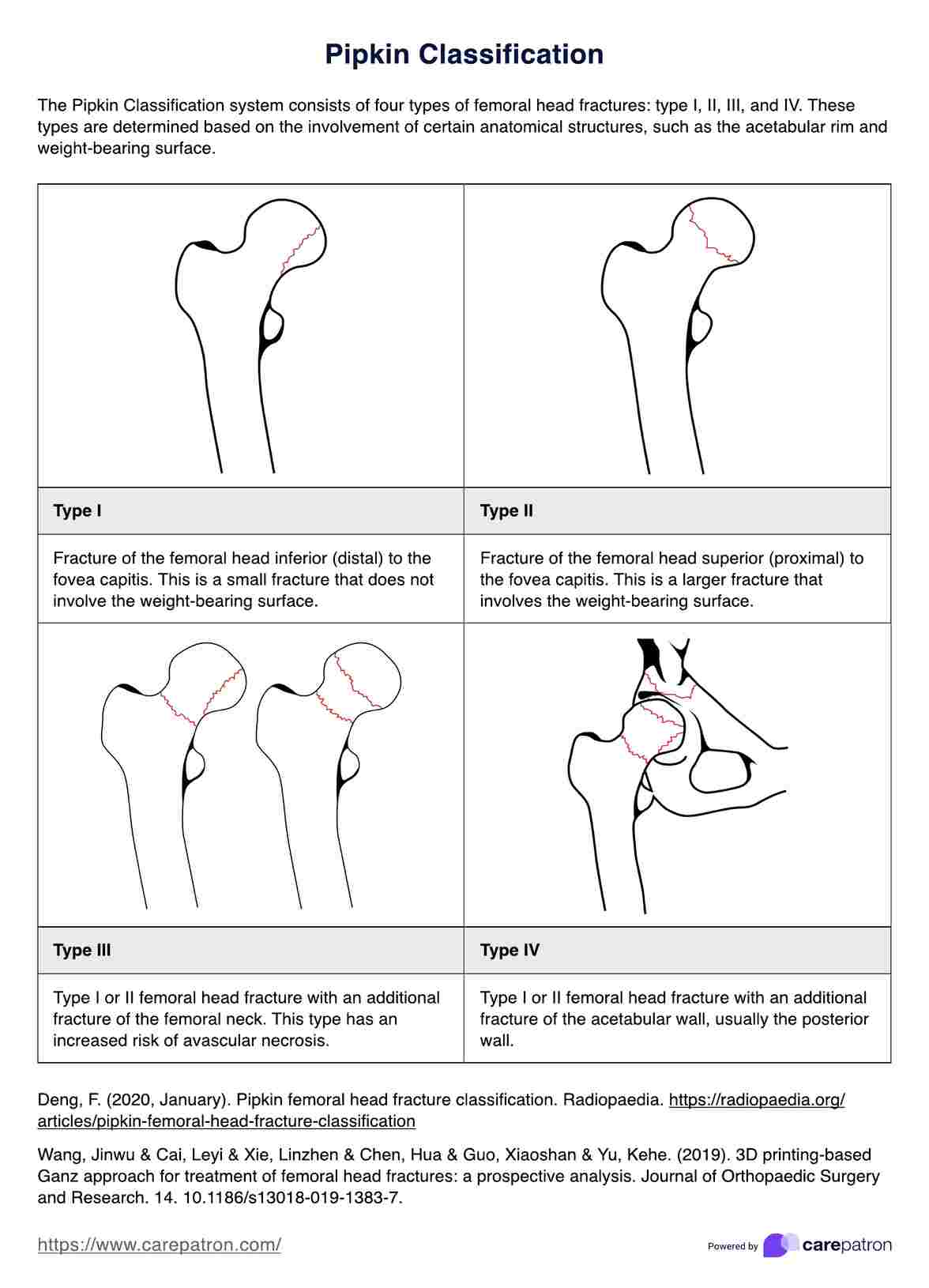Healthcare providers use the Pipkin Classification to guide treatment decisions for femoral head fractures. It helps determine whether closed reduction or surgical intervention is necessary based on factors like fracture location, associated injuries, and joint stability.

Pipkin Classification
Explore the Pipkin Classification system for femoral head fractures, guiding treatment decisions based on fracture location and associated injuries.
Pipkin Classification Template
Commonly asked questions
Type I and II fractures may often be managed with closed reduction alone if there are no complicating factors. Type III fractures typically require surgical intervention due to the complexity and forces involved. Type IV fractures, which involve both the femoral head and acetabulum, necessitate careful assessment and often surgical fixation of both components.
While widely used, the Pipkin Classification's reliability in predicting outcomes and guiding treatment choices can vary. It may not account for all variables like other associated femoral neck fractures, acetabular fracture, comminution or joint stability, and other traumatic dislocations. Its application may require clinical judgment and experience.
EHR and practice management software
Get started for free
*No credit card required
Free
$0/usd
Unlimited clients
Telehealth
1GB of storage
Client portal text
Automated billing and online payments











